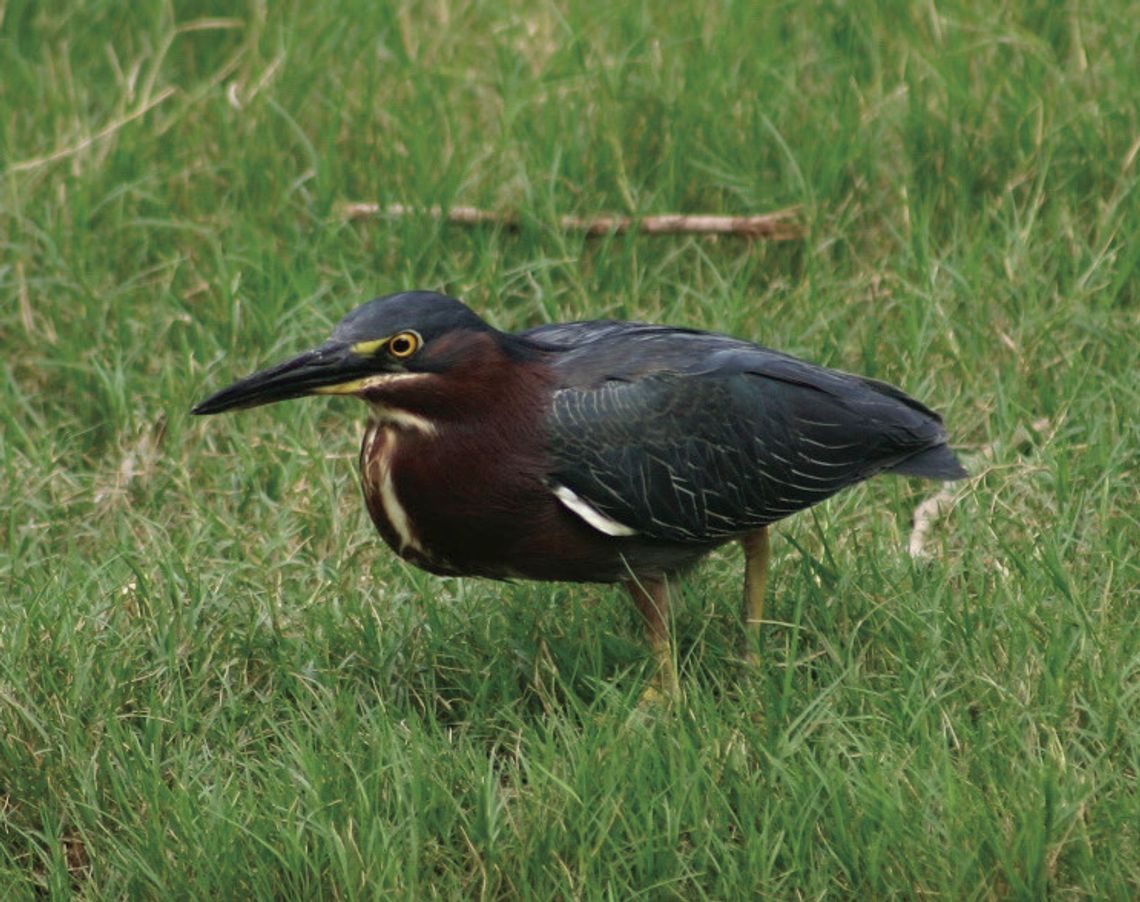The adjective used in the common names that have been applied to birds typically describes their appearance; the Red-headed Woodpecker, the Scissor-tailed Flycatcher, and the Red-eyed Vireo are all examples of how that is accurate. Occasionally however, the adjective in the common name does not TRULY give an accurate description of the bird that it is meant to describe.
Examples of this include: the Plain Chachalaca, the House Wren, and the Great Egret. One bird that is a fairly common summer resident in Texas falls into the latter category, and that is the Green Heron.
The Green Heron (Butorides virescens) occurs throughout the eastern onehalf of the United States during the summer months, with many migrating to the warmer areas of the Gulf Coast states during the winter. There are also isolated populations that are permanent residents along the Pacific coast. In Texas, it can be seen year-round in the central and southern portions of the state, and it can be a fairly common sight along the Rio Grande and Pecos River systems during the warmer months.
It is a moderately sized shallow-water dweller, with most adults attaining a length of just under two feet. The wingspan is not much larger, reaching a length of approximately twenty-six inches. It is far less impressive in size than its close relative, the Great Blue Heron. Unlike the common name that this species is identified as, this bird is typically more iridescent blue in coloration rather than green. It has a dark gray cap on the top of the head with a large yellow patch of skin in front of the yellow eyes. The top bill is dark while the lower bill is yellow-brown in color.
The remainder of the head, neck and breast are chestnut to purple, and there are numerous white patches on the underside. The legs, while not as proportionately long as the Great Blue Herons, are usually yellowish until breeding season, when many times they become a darker orange. In flight, it is often mistaken for a Crow as it is similar in size and flight patterns; direct flight with slow and steady wing beats.
Like other Heron species, the Green Heron is strictly carnivorous, feeding primarily on fish, although other vertebrate animals such as aquatic snakes, turtles, frogs, and mice are opportunistically preyed upon. To acquire its food, this “long-legged wader” will either walk along in the shallows slowly or even patiently remain motionless of long periods of time.
Occasionally it will stand on an overhanging branch, waiting for the opportune moment to strike quickly with its stout beak. It has been documented to actually “go fishing,” utilizing smaller fish as bait to attract larger fish.
During the vast majority of the year, this aquatic species is solitary. However, during the breeding season, it will pair up in solitary pairs, or occasionally, small colonies. Pairs are monogamous, and the male collects the supplies needed for nest building while the female utilizes the twigs, sticks, leaves and grass for the actual nest construction. Most nests are built in short trees only five to twenty feet in the air; sometimes these nests are built a considerable distance from any water source. One to two broods per year are produced, with two to seven green (perhaps that is where the common name originated?) eggs being the norm. Both parents incubate the one and one-half inch long eggs for about three weeks. Both parents feed the young, which are ready to leave the nest in just over two weeks from the day of hatching.
Population density studies have shown that this common, easily observed, but unique “fisher-bird” species are quite stable.





















